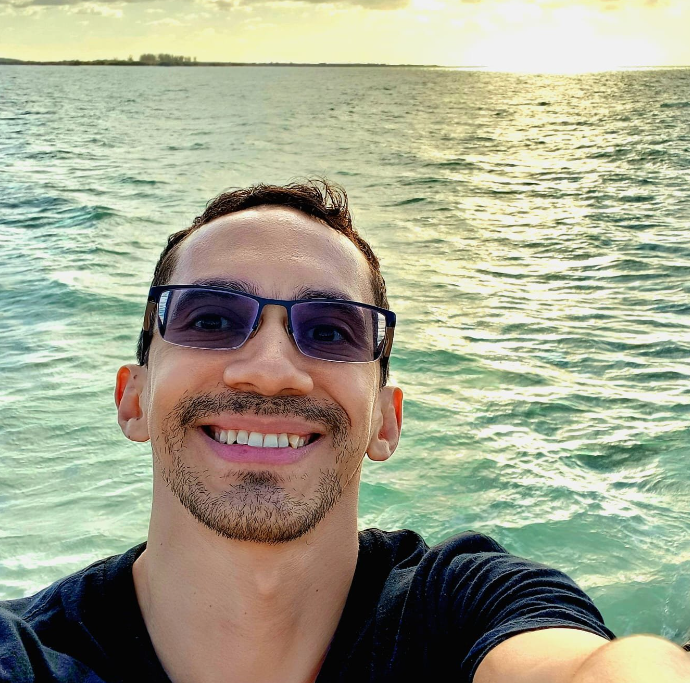Julio Lara Hernandez
Postdoctoral Fellow in Geography, University of Victoria
PhD Marine Sciences and Limnology, National Autonomous University of Mexico, UNAM, CDMX, Mexico
MRes Department of Biomedical Sciences, Macquarie University, Sydney, Australia
MSc Marine Sciences and Limnology, National Autonomous University of Mexico, UNAM, CDMX, Mexico
BSc Marine Biology, University of the Sea, UMAR, Oaxaca, Mexico
Contact | ResearchGate
Spectral Lab Research:
I am a postdoctoral fellow focussed on developing and validating a digital monitoring and forecasting system specifically designed for the Mexican Caribbean to address the persistent challenge of massive Sargassum beach landings. My project combines numerical modeling, high-resolution satellite imagery, and field campaigns to monitor Sargassum at sea and predict its potential coastal arrivals. In the field, I use drifting buoys, drones, ADCPs, and other techniques to characterize winds, currents, and the distribution and trajectories of Sargassum. These measurements provide the critical data needed to calibrate, train, and validate the monitoring and forecasting system, ensuring that it delivers reliable and locally relevant information to support adaptive coastal management.
Background:
My interest in ocean transport processes has persisted throughout my career. During my undergraduate research in Marine Biology at the University of the Sea (Mexico), I used numerical models to study how distant coral reefs remain connected via larval dispersal. At the National Autonomous University of Mexico (UNAM), my Master's work focused on modeling the complex larval transport of commercially important lobster populations in the Gulf of Mexico, developing custom particle-tracking algorithms to capture their unique behaviors. I also contributed to oil spill dispersion modeling at the Institute of Atmospheric Sciences and Climate Change, simulating the effects of windage and degradation on oil transport. During my PhD in Marine Sciences, I started to investigate the transport dynamics of Sargassum in the Mexican Caribbean involving a combination of different tools plus an interdisciplinary and collaborative approach. Now, my work at UVic bridges biology, oceanography, and computation to transform complex environmental data into practical forecasting tools that help address one of the region’s most urgent coastal challenges.
Expertise and Experience:
Lagrangian modeling, ocean modeling, marine ecology, larval transport, marine connectivity, oil spills, pelagic Sargassum, digital monitoring, forecasting
Publications:
Uribe-Martínez A, Allende-Arandía M, Lara-Hernández J, et al. (in press) Remote monitoring, modeling and early warning of sargassum: State of the art in Mexico. Book chapter in: Foundations of comprehensive management of massive sargassum landings in the Mexican Caribbean. National Council of Humanities, Sciences and Technologies, CONAHCYT, Mexico.
Lara-Hernández J, Enríquez C, Zavala-Hidalgo J, Cuevas E, van Tussenbroek B, Uribe-Martínez A (2024) Sargassum transport towards Mexican Caribbean shores: Numerical modeling for research and forecasting. J Mar Syst. https://doi.org/10.1016/j.jmarsys.2023.103923
Pérez-Brunius P, Beron-Vera F, Kotzakoulakis K, Lara-Hernández J, et al. (2020) Possibly affected regions under different oil spill scenarios in the deep waters of the Gulf of Mexico. Vol. 1. Section 1. In: Pérez-Brunius P, Aguirre-Macedo M (eds) Regions, species and ecosystems vulnerable to large-scale spill scenarios in the Gulf of Mexico. Gulf of Mexico Research Consortium (CIGoM). https://escenarios.cigom.org/
Lara-Hernández J, Zavala-Hidalgo J, Sanvicente-Añorve L, Briones-Fourzán P (2019) Connectivity and larval dispersal pathways of Panulirus argus in the Gulf of Mexico: A numerical study. J Sea Res, 155: 101814. https://doi.org/10.1016/j.seares.2019.101814
Anguiano-García A, Zavala-Romero O, Zavala-Hidalgo J, Lara-Hernández J, Romero-Centeno R (2019) High Performance Open Source Lagrangian Oil Spill Model. In: Torres M, Klapp J, Gitler I, Tchernykh A (eds) Supercomputing. ISUM 2018. Commun Comput Inf Sci, vol 948. Springer, Cham. https://doi.org/10.1007/978-3-030-10448-1_11
Lara-Hernández J, Kim MO, Avolio AP, Butlin M (2018) Transfer function between intracranial pressure and aortic blood pressure and carotid blood flow. Annu Int Conf IEEE Eng Med Biol Soc, 2018: 3169-3172. https://doi.org/10.1109/EMBC.2018.8512987
López-Pérez A, Cupul-Magaña A, Ahumada-Sempoal MA, Medina-Rosas P, Reyes-Bonilla H, Herrero-Pérezrul MD, Reyes-Hernández C, Lara-Hernández J (2016) The coral communities of the Islas Marias archipelago, Mexico: structure and biogeographic relevance to the Eastern Pacific. Mar Ecol, 37: 679-690. https://doi.org/10.1111/maec.12337
PhD Dissertation: “Dynamics of pelagic sargassum transport in the Mexican Caribbean” [Link]
MRes Thesis: “An investigation of systemic haemodynamic correlates of intracranial pressure” [Link]
MSc Thesis: “Larval transport and potential connectivity of stony corals in the Mexican Pacific: study using numerical simulations” [Link]
Bachelor's Thesis: “Larval transport and potential connectivity of stony corals in the Mexican Pacific: study using numerical simulations” [Link].

